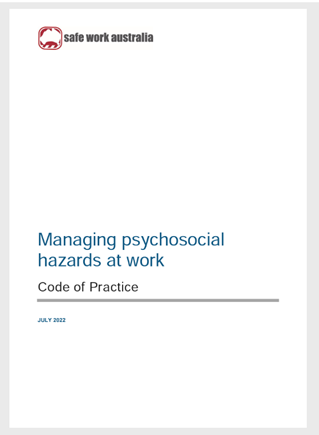Originally posted on October 27, 2022 @ 4:42 PM
 There seems this strange belief in the industry of safety, that any action can be justified if the intent, passion and outcome is safety.
There seems this strange belief in the industry of safety, that any action can be justified if the intent, passion and outcome is safety.
As long as the outcome is zero, any action is OK. This belief comes from a long tradition in engineering and behaviourism that commits the industry of safety to objects not persons. When you read the AIHS BoK Chapter on non-ethics you realise that Safety is committed in duty to objects NOT persons.
Neither the language or discourse of power or persons is mentioned in the AIHS BoK on non-ethics. Mindblowing!
The duty of Safety not persons, is a sure recipe for a bankrupt ethic and immoral brutalism.
How convenient to make no mention of power or persons in a discussion of non-ethics.
The beginning and foundation of any ethic is an understanding of power and persons.
How fascinating to read in Safety policies on mental health, psychological well-being, harassment, psychosocial hazards and abuse and, no discussion of the nature of power.
A good example of missing the boat on power is this one: Model Code of Practice: Managing Psychosocial Hazards at Work.
This document is an absolute minefield for any safety person who imagines they might have the skills or knowledge to enact anything described in this code of practice. The reality is, the safety curriculum remains a head in the sand mono-disciplinary fortress locked into engineering and behaviourism.
In all of the 54 pages in a so-called ‘model code of practice’ to managing psychosocial hazards, the only mention of ‘power’ regards ‘’power imbalance’ as a passing comment, and this is mentioned twice. The word ‘duty/duties’ is mentioned 26 times, ‘hazard’ 50 times, ‘behaviours’ 15 times, ‘politics’ nil, ‘ideology’ nil and, ‘controls’ 13 times. In the whole document there is no definition of power or discourse on the abuse of power, nor any discussion of ethics. And as usual Safety always starts with the Act and Regulation. This is how Safety frames its worldview.
If you read the text it starts with a clanger like this: ‘Stress itself is not an injury but if it becomes frequent, prolonged or severe it can cause psychological and physical harm’. This is typical of the kind of gobbledygook one gets in safety documents purport some kind of expert status. The AIHS BoK on non-ethics is much worse.
Alternatively, if one reads any competent text on trauma and stress (distress) (eg. Gabor Mate – The Myth of Normal), you will quickly dispose of such ignorant assertions espoused by this so-called ‘model’.
In a text on a so called ‘model’ of practice to manage psychosocial hazards, it is astounding that there is no focus on Socialitie in relation to power.
Despite mentioning the word ‘consultation’ 30 times there is no discussion in the text on what kind of power enables consultation.
The word ‘humble’ nor ‘humility’ nor ‘mutuality’ appear anywhere in the text.
This is typical of how Safety seeks to address its responsibility toward a moral philosophy and an ethic in tackling risk. Little did I realise that the best way to tackle ethics, power and culture (non-defined) is to ask a safety engineer.
Without an ethic of risk that humanises persons and privileges persons over objects, humans will never be safe at work. Neither will safety ever become professional.
Here are a few books to get you started on the nature of power:
· Apple. Knowledge, Power and Education
· Bourdieu. Language and Symbolic Power
· Chomsky. On Power and Ideology
· Depree. Leading Without Power
· Ellul. Money and Power
· Foucault. Power/Knowledge
· Kramsch. Language as Symbolic Power
· Lazar. Feminist Critical Discourse, Gender, Power and Ideology in Discourse
The study of power, politics, ideology, Socialitie and ethics is foundational for Social Psychology. This tradition/Discipline is described here: https://safetyrisk.net/speaking-truth-to-power-and-safety/
All of the readings above come from this Discipline.
We have also written complementary blogs on power here:
· https://safetyrisk.net/cultural-silences-in-safety-power-and-politics/
· https://safetyrisk.net/slogan-power/
· https://safetyrisk.net/silence-power-and-an-ethic-of-risk/
· https://safetyrisk.net/politics-and-power-in-safety/
· https://safetyrisk.net/the-power-of-symbols-in-safety/
· https://safetyrisk.net/i-have-the-power-im-a-safety-hero/
· https://safetyrisk.net/a-patronising-disposition-of-unaccountable-power/
· https://safetyrisk.net/safety-only-for-the-rich-and-powerful/
Unless Safety embraces a Transdisciplinary approach to education and learning to include other disciplines like these, it will never escape the burden of engineering and behaviourism or ever become professional. Neither will it develop an interest in understanding power, ideology, ethics or politics.
Safety is such a contradiction. It has a mad thirst for find cause and blame yet when it comes to psychosocial health its only interested in symptoms not cause. Safety shows no interest in worldviews or methodologies that drive psychological harm.
If one wants to understand power, it needs definition and given form. What form of power has been exorcised?
1. Reward power
2. Coercive power
3. Legitimate power
4. Referent power
5. Regulatory power
6. Expert power
7. Relational power
8. Charismatic power
9. Indifferent power
10. Irrational power
Hey but why study power? Let’s just put it with culture and not talk about it (Busch).
Nothing better than ‘head in the sand safety’ to enable and empower unethical discourse, an abuse of power and dehumanising practice.
In SPoR, we study as foundational the nature of ethics, politics, ideology and power as a way of understanding moral enactment in tackling risk (https://cllr.com.au/product/the-social-politics-of-risk-unit-14/). You will find nothing like this anywhere in the safety industry globally.



Do you have any thoughts? Please share them below